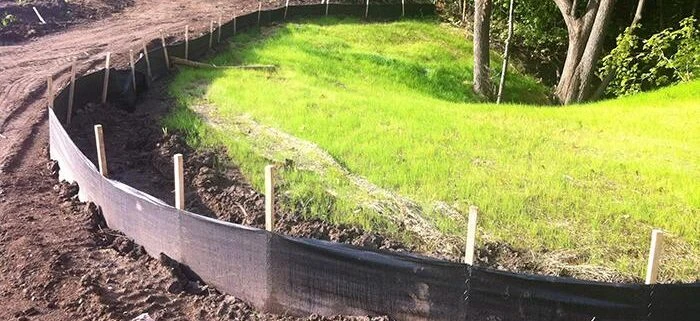Stormwater Inspections (What Are They & How To Maintain Compliance)
Construction moves fast. Projects rise from the ground with precision, budgets stretch, schedules tighten, and crews hustle. Amid all of that? Rain. And with rain comes runoff—a silent risk that many overlook until the fines are issued or the inspectors arrive.
Stormwater inspections—specifically SWPPP (Stormwater Pollution Prevention Plan) inspections—aren’t optional. They’re regulatory checks built to protect waterways, prevent pollution, and keep contractors from crossing lines they didn’t even know existed.
So what are these inspections really about? Why do they matter? And how can you pass them without pulling your hair out? Let’s break it down.
What Is a Stormwater Inspection?
Imagine this: your jobsite just got hit with a half-inch of rain. That water doesn’t vanish. It moves. It carries sediment, chemicals, debris—whatever it touches—offsite and into local streams or storm drains. And if your controls aren’t in place? You’ve just created a pollution pathway. Enter the inspector.
Stormwater inspections ensure you have working protections in place to stop that kind of runoff. These inspections verify your BMPs (Best Management Practices), erosion controls, documentation, and overall approach to environmental protection.
Fail to conduct them on schedule or log them properly? Penalties stack fast.
Why You Can’t Ignore SWPPP Inspections
Most sites disturbing more than one acre of land require SWPPP inspections. That’s federal regulation, not a suggestion. The government expects you to inspect:
- Once a week during active construction
- Within 24 hours after a qualifying rain event (typically 0.5 inches or more)
And here’s where most companies fall short: they don’t document. They forget to maintain their controls. Or they simply don’t realize the standard the government holds them to until they receive a fine.
HB NEXT works with construction teams to stop that from happening. We conduct SWPPP/NPDES inspections. We help you build systems that withstand scrutiny. And we make sure everything’s logged—because if you don’t write it down, it didn’t happen.
CESCL Inspections: Who’s Certified—and Why It Matters
Some states require stormwater inspections to be performed by a CESCL—a Certified Erosion and Sediment Control Lead. That’s not just a fancy title. It means the inspector went through training to evaluate erosion risks, recommend Best Management Practices (BMPs), and thoroughly understand compliance standards.
Yes, HB NEXT provides CESCL-qualified professionals. And yes, they’re ready to step onto your site when the rain hits—or before it does. Because waiting until after the problem occurs is how companies end up paying for problems twice: once in repairs, again in penalties.
Why This Affects More Than Just Your Environmental Scorecard
Stormwater compliance doesn’t sit in a vacuum. It’s linked to broader risk. It impacts your insurance rates. It shows up in prequalification platforms. It affects how general contractors, clients, and even municipalities view your operations.
Let it slide, and you’re not just risking fines—you’re risking future bids, reputational damage, and project delays.
HB NEXT exists to make sure that doesn’t happen. We’ve supported hundreds of companies across the Southeast and beyond. And we’ve seen what happens when you neglect erosion controls, documentation is sparse, and a good rainstorm is all it takes to bring compliance crashing down.
How To Stay in Compliance (Without Losing Your Sanity)
Here’s what you can control:
- Create a SWPPP before you break ground. Make sure it fits your site, not someone else’s.
- Install BMPs that work—don’t just throw a silt fence out and call it a day.
- Inspect regularly. Set reminders. Track rainfall. Make it a routine.
- Train your team. The team should understand both the importance and the rationale behind these measures.
- Log everything. Keep records—real ones. Dates, photos, corrections, and signatures.
- Bring in experts when needed. You don’t get a second chance during an EPA visit.
HB NEXT helps construction leaders implement all of the above, without turning it into a second full-time job. From certified inspections to stormwater data tracking via Sequence™, we keep your site in shape and your risks in check.
What Happens if You Don’t?
Let’s be clear: fines aren’t theoretical. EPA and state agencies issue thousands every year, and they’re not gentle. The average serious citation exceeds $10,000. Repeat offenses? $100,000+ isn’t unheard of.
And it’s not just financial. If inspections find your site discharges pollutants without adequate control, you may be required to shut down until you make the necessary corrections. That’s days—maybe weeks—of lost productivity.
That’s why HB NEXT exists: to prevent fire drills. To keep your records clean. And to help you build a program you’re proud to show, not one you scramble to explain.
What Should You Do Next for Stormwater Inspections?
Stormwater inspections aren’t background noise. They’re part of doing business. But they don’t have to be burdensome. With the right partner, they become a strength—a competitive edge, even.
At HB NEXT, we provide more than inspections. We deliver peace of mind. We help owners and site managers identify blind spots, address issues early, and safeguard their projects from both environmental and regulatory risks.
If you’re ready to protect your site, your budget, and your reputation, call us at 770-619-1669. Let’s ensure that when the next rain falls, your project remains solid. We are here to help you navigate the significant challenges of EPA compliance. Contact HB NEXT at (770) 619-1669 or ask an expert for assistance today.




